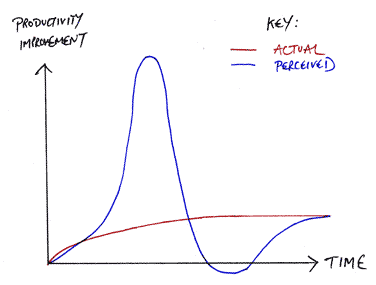
In my earlier post on Murray Rothbard’s article on the Austrial model of the causes of boom-and-bust cycles, I provided a link to the audio-lesson, but not to the article itself. Here is the article if you prefer reading to listening. The article is very good and very easy to understand. As I mentioned before, it outlines the explanations of traditional Keynesian model and their problems:
1. They contradict standard economic theory (from which they are kept artificially separate) that states that supply and demand are always naturally regulated by the free market.The article provides the Austrian model of boom-and-bust cycle which provides explanation for all of the above and for the cycle itself. In essence, through government-sponsored (and controlled) credit expansion, the market is injected with unjustified credit. This misrepresents true situation of the market and capital/consumer investment ratio. Entrepreneurs’ expectations about demands of the public are skewed by credit availability, letting them think that it makes sense to invest into capital businesses, while consumers spend money on goods instead of saving. This results in undeserved investment into businesses that do not hold expected value — these businesses then need to “shed” this investment in a form of recession and redistribute the capital as required by the market.
2. They do not explain why entrepreneurs who were so good (if they were to stay in business) at making proper predictions about business and how to match consumers’ demand (which contributed to the boom phase, after all) suddenly stopped being good at their jobs — and sometimes very-very sharpy so.
3. They do not explain why precisely capital businesses (those producing tractors, construction supplies, railroads, and hammers) fail first and much more than consumer businesses (those producing iPhones, clothes and cars), if, as Keynesian economists say, decreased consumer spending is to blame for recession.
Therefore, entrepreneurs are not to blame — they are doing what makes sense to do according to rules of the free market (following which these guys got rich to begin with). It’s the government who is to blame, because by controlling cash supply (through Central Bank) it misrepresented consumers’ desires, letting entrepreneurs think that consumers wanted to save money more than spend it (as evidenced by low interest rates normally corresponding to people’s desire to save), while consumers wanted to do the opposite — spend their new income (obtained from artificially expanded credit) on consumer goods. Money that should have been invested in consumer businesses got invested in capital businesses instead. What happens next?
The problem comes as soon as the workers and landlords — largely the former, since most gross business income is paid out in wages — begin to spend the new bank money that they have received in the form of higher wages. For the time-preferences of the public have not really gotten lower; the public doesn't want to save more than it has. So the workers set about to consume most of their new income, in short to reestablish the old consumer/saving proportions. This means that they redirect the spending back to the consumer goods industries, and they don’t save and invest enough to buy the newly-produced machines, capital equipment, industrial raw materials, etc.
This all reveals itself as a sudden sharp and continuing depression in the producers’ goods industries. Once the consumers reestablished their desired consumption/investment proportions, it is thus revealed that business had invested too much in capital goods and had under-invested in consumer goods. Business had been seduced by the governmental tampering and artificial lowering of the rate of interest, and acted as if more savings were available to invest than were really there. As soon as the new bank money filtered through the system and the consumers reestablished their old proportions, it became clear that there were not enough savings to buy all the producers’ goods, and that business had misinvested the limited savings available. Business had overinvested in capital goods and under-invested in consumer products.
The inflationary boom thus leads to distortions of the pricing and production system. Prices of labor and raw materials in the capital goods industries had been bid up during the boom too high to be profitable once the consumers reassert their old consumption/investment preferences.
The “depression” is then seen as the necessary and healthy phase by which the market economy sloughs off and liquidates the unsound, uneconomic investments of the boom, and reestablishes those proportions between consumption and investment that are truly desired by the consumers. The depression is the painful but necessary process by which the free market sloughs off the excesses and errors of the boom and reestablishes the market economy in its function of efficient service to the mass of consumers. Since prices of factors of production have been bid too high in the boom, this means that prices of labor and goods in these capital goods industries must be allowed to fall until proper market relations are resumed.The article also provides advise on what the government should do to prevent depressions and the general boom-and-bust cycle. The advise is surprising for someone used to Keynesian thinking about government’s role of “cooling down” or “boosting up” the economy, but once you read through the whole article, it will all start to make sense.
No comments:
Post a Comment